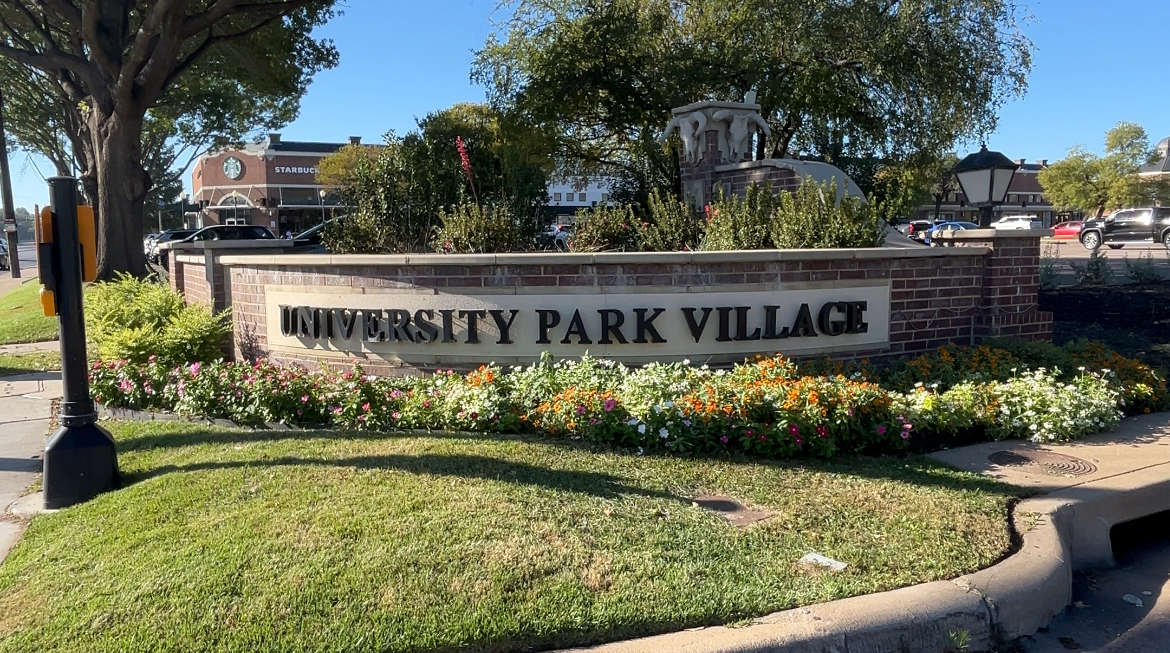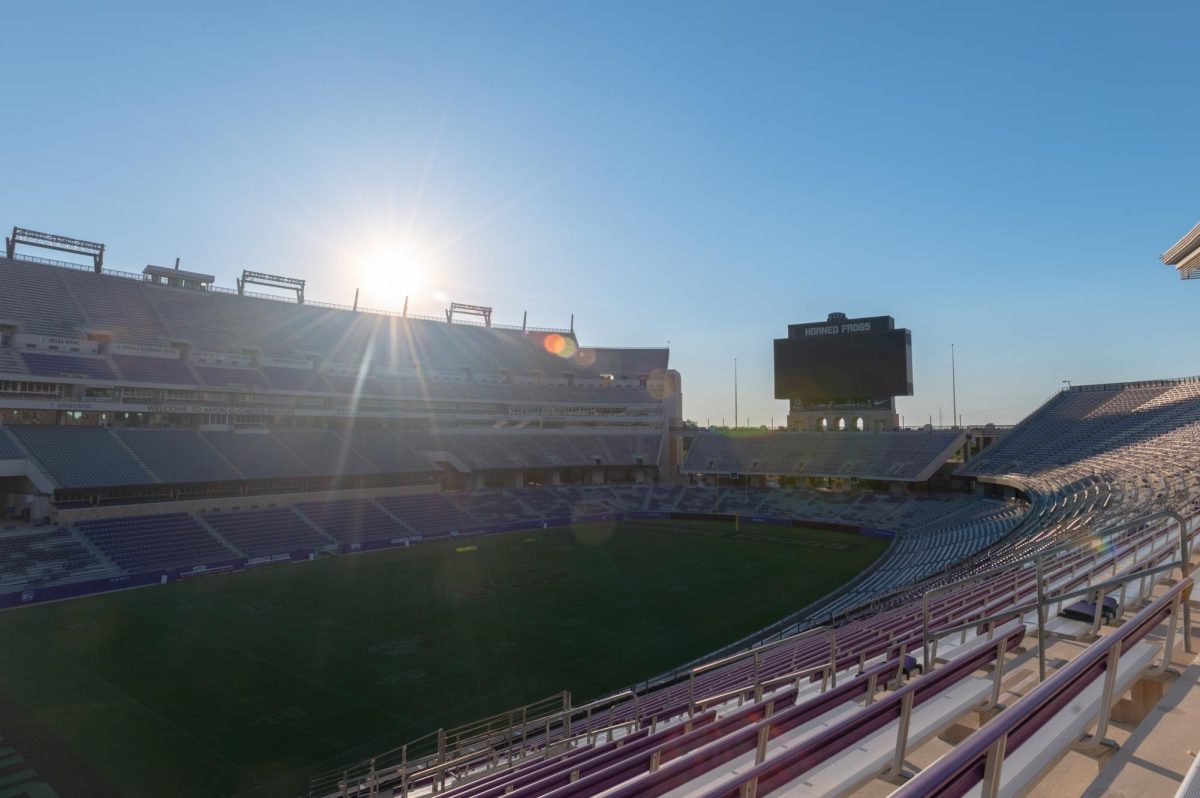A lone duckling glides along the water at Foster Park behind its mother as yellow-crowned night heron stake out breakfast. Although rain threatens, it doesn’t stop one local birder.
“I only missed this once because of ice,” said Jean Ferguson, a Westcliff schoolteacher who conducts birding tours through the Fort Worth Audubon Society.
Ferguson said a lot of birds are more active in the morning because it’s cooler, and Foster Park‘s pecan trees help attract birds that are hunting bugs, seeds and insects.
“In the winter time, they’ll have a lot of bugs in them, and a lot of the birds are moving through for the bugs,” she said. “In the spring time, we can get warblers in.”
Ferguson, who identifies birds more by sound than by sight, likened birding to the art of the hunt that antique collectors experience. Their distinguishing skills sharpen over time, and they also look for specific items in certain parts of the country, she said.
Most ducks move north, Ferguson said, but a lesser scaup has lingered in the park, and she believes it’s because the bird is injured. Ferguson said she also believes the pond’s abundance of turtles is why only one baby duck is left in its mother’s brood.
“Cooper hawks have been nesting in the park for five years now,” she said. “Hummingbirds will nest near them, because other birds will not come near.”
Ferguson said three types of woodpecker can generally be spotted at Foster Park, but painted bunting has only been spotted once. A Peregrine
Falcon was also sighted once during a migration period.
Chuck Baskin, another Audubon member, wrote in an email that he maintains a hummingbird feeder in his yard as well as numerous flowering plants to attract them and also butterflies.
Baskin wrote that until he joined Fort Worth Audubon Society a few years ago, he only knew the calls of a few common birds and relied mainly on visual markers to identify species.
“Taking hikes with Jean and others in the club as well as using the Cornell University eBird site as a resource has greatly expanded the number of birds that I can confidently ID by sound,” he wrote. “Their skills are amazing.”
Baskin is a native of Corpus Christi, which has been dubbed “America’s birdiest city.”
“My mother has always been an avid bird watcher and Audubon member … she also fed the birds in the backyard,” he wrote. ”She gave me my first copy of Peterson’s ‘A Field Guide to the Bird’s of Texas.’”
Comparing birding between the Metroplex and Corpus Christi, Baskin wrote that the fall and spring migrations along the coast are far more significant in both quantity of birds and number of species.
“It is a natural choke point” on the migration route from South and Central America before they spread out across this country and up to the arctic,” he wrote. ”By the time the migrants get to north Texas, they are more spread out, and it is usually more difficult to see as many different species as on the coast.”
Nonetheless, Baskin insists that birding in the Metroplex is still a fun challenge.
Ferguson said there are a few more species to be spotted in the spring, and their colors are brighter, but the numbers are generally about the same.
“Cooper hawks and Mississippi kites are making a comeback in this area.” she said. “Both of them are learning to live with people. That’s going to be the key to what birds survive and which ones don’t.”
Loss of habitat is why herons reside in neighborhood trees, Ferguson said. They don’t have anywhere else to go, and in order to save a species you need to preserve its habitat.
“If you don’t save the habitat along with the bird. There’s really no point,” she said.
Ferguson understands the issue concerning the 109’s egret population. It’s sad, she said, but if she had 20 nesting egrets in her backyard, it would stink and probably kill her trees.
“You can’t have that much poop and it not kill your trees,” she said. “It’s all part of a natural cycle. But we don’t want that cycle.”
On the other hand, Ferguson said people have also created environments for birds like the great-tailed grackle which prefers short grass and trimmed up trees.
Natural birdsongs ride the wind outside Wild Bird Center at 3000 Hulen Street which carries a wide selection of birdseed and feeders.
“We can help someone get off to a good start to being a backyard birder,” store manager Gail James said. “This is a great area to be in. It’s a great environment.”
James said cardinals and great-tailed grackles are a few of the many birds that populate the area.
“Cardinals, chickadees, wrens, titmouse, woodpecker, blue jay, you could have a list a mile long,” she said.
Some species, like the white winged dove are nuisances that people do not want to attract, James said.
“Because they eat everything, they’ve been called pigs with wings,” she said.
European starlings and house sparrows are also considered nuisances, James said, and are not native to the United States. Those birds were brought over from Europe.
Ferguson said a ringed teal which is a non-native to this area was spotted once.
“We felt like it was an escapee from the zoo,” she said. “That’s the only reason it would be here.”



